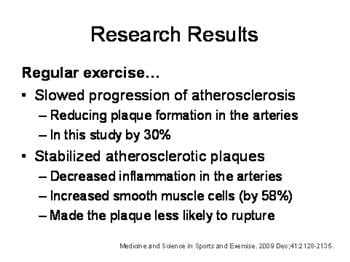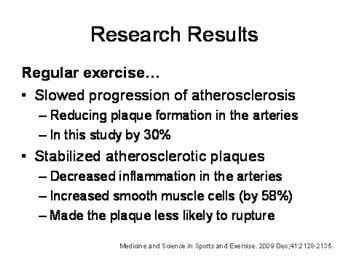 Heart disease and strokes continue to be the leading cause of death in the United States and most other developed countries. It is well known that a build-up of cholesterol in the arteries forming plaque is the primary underlying cause of both heart attacks and strokes. As the plaque in the arteries accumulates, the flow of blood is diminished. As the plaques grow larger, they also become unstable and rupture, much like a bleeding sore. The result is a quick and dramatic series of events often resulting in platelets stopping the bleeding but also blocking the artery's blood flow. If this is an artery in the brain, a stroke occurs. If it's an artery in the heart, a heart attack occurs.
Heart disease and strokes continue to be the leading cause of death in the United States and most other developed countries. It is well known that a build-up of cholesterol in the arteries forming plaque is the primary underlying cause of both heart attacks and strokes. As the plaque in the arteries accumulates, the flow of blood is diminished. As the plaques grow larger, they also become unstable and rupture, much like a bleeding sore. The result is a quick and dramatic series of events often resulting in platelets stopping the bleeding but also blocking the artery's blood flow. If this is an artery in the brain, a stroke occurs. If it's an artery in the heart, a heart attack occurs.
Thus, the primary strategy for preventing heart attacks and strokes is to both slow the build-up of atherosclerosis plaques and to stabilize plaques that are already formed (common in most older persons) so that they don't rupture. A new study shows this is exactly what happens in a long-term (6 months or more) exercise program.
Researchers used two groups of animals in their study. One group of animals exercised 50 minutes a day for 6 months. The other group was sedentary. Both groups were fed a high-saturated fat and cholesterol diet, similar to what most Americans eat. On this diet, these animals will develop atherosclerosis similar to humans.
After 6 months, the researchers studied the arteries of both groups of animals. Both groups showed development of atherosclerosis in their arteries but the exercising group significantly decreased the development of atherosclerosis (by about 30 percent).
Secondly, the exercising animals showed a significant improvement in plaque stability. They had less signs of inflammation and increased smooth muscle cells (58 percent increase) which help make the plaque stronger and less likely to rupture.
Based on this new research, regular, long-term exercise protects the heart by both of these vital changes for prevention:
- Decreasing atherosclerosis in the arteries, and
- Stabilizing the plaques that are already there, decreasing their risk of rupture and precipitation of a heart attack or stroke.
Regular exercise also exerts other protective benefits to the cardiovascular system:
- Reduces body fat, especially abdominal fat that is so harmful to the heart.
- Reduces blood pressure.
- Improves blood cholesterol levels.
- Reduces inflammation (a key factor in causing plaque rupture).
- Enhances insulin sensitivity, improving blood sugar levels and decreasing risk for diabetes (which is a very major risk for heart disease).
- Decreases risk of blood clots by enhancing fibrinolysis (preventing or dissolving unwanted clots).
- Improves endothelial function, how the lining of the blood vessels work to keep the arteries healthy and functioning properly.
Regular exercise is good medicine for a healthy heart and brain. Aim for at least 20-30 minutes of aerobic physical activity most days of the week.
Need help getting started and getting your population engaged? Download the Ultimate Guide to Wellness Engagement and let us help.
Reference:
- Pellegrin M, et al. Exercise stabilizes atherosclerosis plaque. Medicine and Science in Sports and Exercise. 2009 Dec;41:2128-2135.








